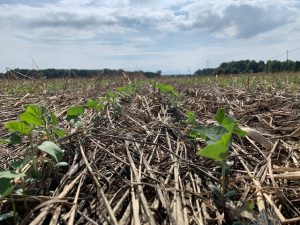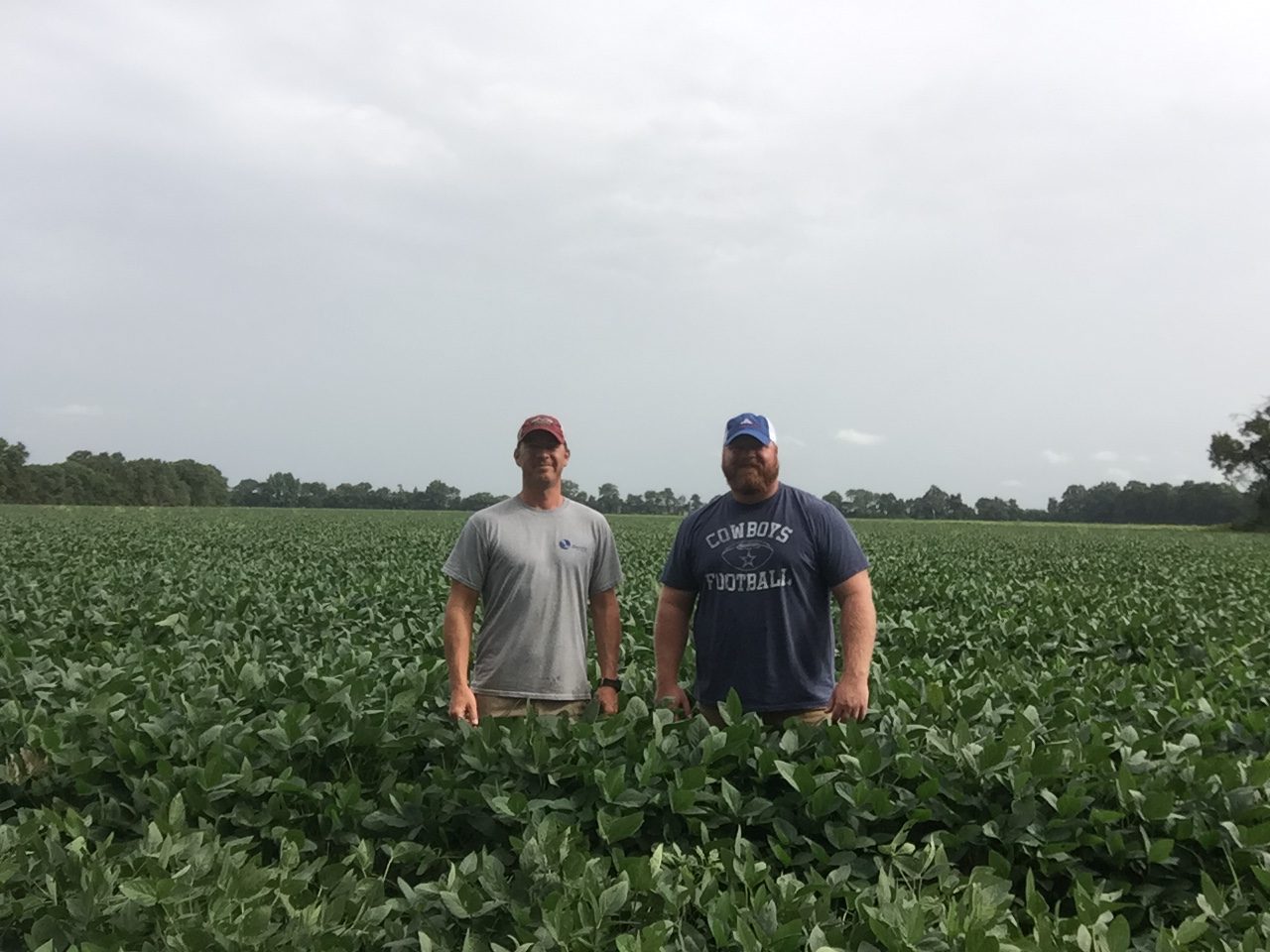In 2010, Adam Chappell, a farmer in Cotton Plant, Arkansas, faced a major challenge. Palmer amaranth, a nasty weed with stems as big as baseball bats and the ability to spread one million seeds per plant, was wreaking havoc on his family’s 9,000 acre farm.
“It was breaking us financially, and we were trying a way to fight that without relying so highly on chemicals. We were using so many of them so we started looking at organic growers and seeing what they were doing,” says Chappell who farms with his brother, Seth.
He researched and found an organic farmer in Pennsylvania who was successfully growing organic pumpkins using a cover crop of cereal rye to reduce weeds.
Chappell decided to grow 300 acres of cereal rye. “Those pumpkins were clean, so we thought we’d try growing cereal rye,” he says.
The cereal rye worked, solving the weed problem. It convinced Chappell of the effectiveness of cover crops and inspired him to research soil health to “see where that could take us.”
“Now our focus is what we can do for our soil. We learned as we went and realized what was happening underground was way more than just helping with weed control,” he says.
Less irrigation, reduced use of herbicides and fertilizers
Today, Chappell tries to grow cover crops on all 9,000 acres each year. He grows a variety of cover crops including cereal rye, black oats, daikon radish, vetch, peas, and clover.

Non-GMO soybeans emerge from cover crop of cereal rye on Adam Chappell’s farm
He also practices no-till farming to avoid disturbing the soil with plowing.
As a result, he has seen many benefits to his farm and his bottom line.
“We noticed that by keeping residue on the soil and having something there living all the time, we were irrigating (fields) 50 percent less than we used to do. It’s a huge savings of water and money,” he says.
The cover crops help the soil retain water so it isn’t lost to evaporation.
“The soil has a layer of insulation that keeps water in,” Chappell says. “It’s a huge difference in water use efficiency.”
He has also cut herbicide use by 50 percent and nitrogen fertilizers use on corn, cotton, and rice by 30 to 40 percent.
“The less herbicides we have to use, the better,” he says. “If we can control weeds by denying them sunlight instead, that’s free weed control.”
Chappell says farmers are “inundated daily” with promotions for the latest agriculture technology and chemicals, but not cover crops.
“If you start planting cover crops, and everybody reduces their herbicide bill by 50 percent, what does that do to Big Ag’s bottom line? It’s no coincidence they discourage the use of cover crops.”
Chappell is also bringing cattle back to his farm, calling livestock the “final piece of the soil health puzzle.” Grazing cattle convert crop residues into manure, which helps feed soil microbes and, in turn, builds soil organic matter.
Chappell is convinced that switching to regenerative agriculture methods like cover crops and no-till saved his farm.
“If I hadn’t made the change to regenerative agriculture, if our farming operation hadn’t switched to no-till and cover crops and just kept doing what we’d been doing, we would’ve been out of business a long time ago,” he says.
Chappell is also doing his part to mitigate climate change as regenerative agriculture practices such as cover crops and no-till help to absorb carbon in the soil and reduce greenhouse gas emissions. A recent report by the Intergovernmental Panel on Climate Change found that agriculture, forestry and other types of land use account for 23 percent of human greenhouse gas emissions. The report estimates that efforts to improve soil management and curtail deforestation could reduce such emissions by 5 to 20 percent.
“Economically, growing non-GMO makes more sense”
Chappell grows a diversity of crops, another key regenerative agriculture practice. Diverse crop rotations help to break weed and insect pest cycles.
His crops include non-GMO corn and soybeans, cotton, rice, milo, wheat, and oats, among others.
“We try to grow as many different things as we can,” he says.
Chappell grows non-GMO corn and soybeans because the seed cost is 50 percent less than genetically modified seed. He pays $100-155 a bag for non-GMO corn, while the GMO corn seed costs $275-325.
Chappell sells his non-GMO corn and soybeans to Ozark Mountain Poultry where they are used as feed. He earns premiums of $.80 per bushel for corn and $1.00 for soybeans above commodity prices. He also grows 400 acres of food-grade non-GMO soybeans that command an even higher premium.
“Economically, growing non-GMO makes more sense,” he says. “The cost of the seeds is less, and what you get for the end product is more.”
Chappell has grown non-GMO cotton in past years but this year he planted a GMO variety.
“I was experimenting with wider row spacing, and weed control in the non-GMO cotton is still pretty challenging, even with cover crops,” he says.
Helped start Arkansas Soil Health Alliance
Chappell is one of the founding members of the Arkansas Soil Health Alliance, which he says started “organically.”
“We all do cover crops and were going to no-till meetings and kept running into each other and talking. So we decided to start a group to help other farmers learn, share ideas, and help other people get going.”
The alliance has about 11 members now and has applied for grants to hold field days and host guest speakers.
With a focus on soil health, reduction of chemical inputs, and diverse crop rotations, Chappell is moving toward organic production, but doesn’t plan to go completely in that direction.
“It’s just not something I’m willing to tackle, as far as the level of management. But more power to the guys who are (growing organic), because they get good premiums, and if they can make it work, they’re doing pretty good,” he says.
Adam Chappell sees continuous improvement on his farm with regenerative agriculture practices in terms of soil health and his bottom line.
“The name of the game for me is cost reduction, and that’s what this farming method has provided. All the other good things we’ve noticed were secondary at the time, but now they’re the reason we’re doing it. The more we learn and the longer we’re in this system, the better things are getting.”









